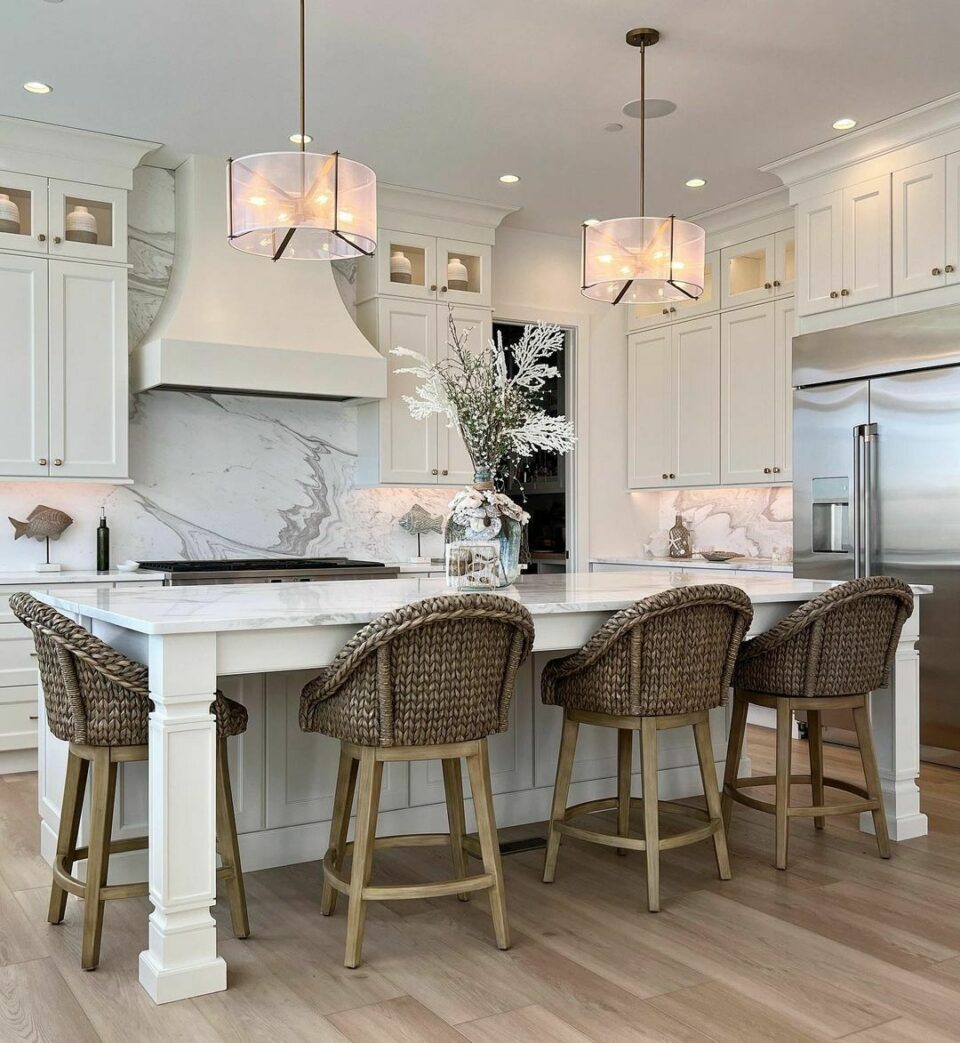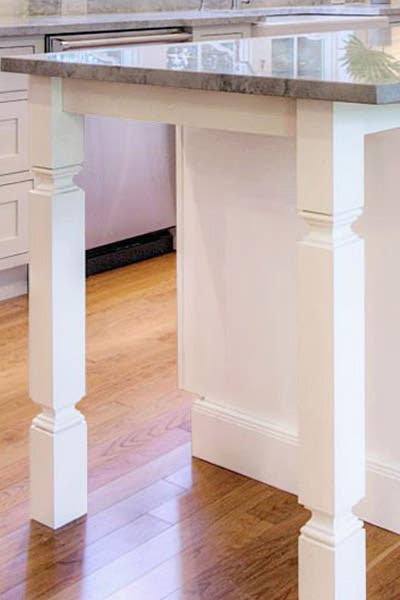Customize Your Kitchen Look with One-of-a-kind Legs For Kitchen Island Choices
Customize Your Kitchen Look with One-of-a-kind Legs For Kitchen Island Choices
Blog Article
An Overview to Selecting the Perfect Legs For Kitchen Area Island for Your Home
Picking the excellent legs for your cooking area island is a nuanced choice that influences both the capability and visual charm of this central space. As you consider these elements, it comes to be noticeable that the ideal legs can transform not only the look of your cooking area yet also its functionality for years to come.

Comprehending Kitchen Island Legs
When choosing legs for a kitchen island, it's necessary to understand their useful and aesthetic roles in the general layout. The legs function as a vital support system, making certain stability and toughness for the island, which often works as a work space, dining area, or gathering area. Consequently, the choice of product and construction technique should be durable adequate to withstand everyday usage and possible wear.
In addition to their architectural obligations, legs contribute dramatically to the island's visual allure. They can enhance the kitchen area's design, whether with typical, contemporary, or diverse designs. The height and percentage of the legs are additionally critical considerations; they should harmonize with the island's counter top height while guaranteeing comfortable seating for those using the space.
Moreover, the leg design can affect the total circulation of the kitchen area. Open, airy leg styles can create a feeling of agility, while strong, considerable legs may convey a more based and secure aesthetic - Legs For Kitchen Island. Comprehending these visual and functional aspects will certainly direct home owners in making notified options that complement their kitchen's design and boost its functionality
Popular Styles and Materials
The option of legs for a kitchen island includes a selection of preferred designs and products, each offering special features that can enhance both capability and visual appeals. Typical legs usually exhibit ornate information and workmanship, enhancing traditional kitchen area layouts.

Elevation and Stability Factors To Consider

The legs of the kitchen area island should supply adequate assistance, ensuring that the structure can hold up against everyday usage without wobbling or moving. Material selection plays a significant duty in security; metal legs, for circumstances, often tend to provide higher strength compared to timber.
Matching Your Kitchen Aesthetic
Selecting the right legs for your kitchen island goes past capability; it also plays a significant duty in the overall aesthetic of the area. When picking legs, consider the design style of your kitchen area. For a modern appearance, sleek metal or minimalist styles can produce a tidy, modern-day ambiance. On the various other hand, rustic or standard cooking areas often take advantage of wooden legs with complex outlining or a distressed surface, boosting heat and personality.
Color is another critical factor. Legs that complement or comparison with your island's surface area and bordering cabinets can produce visual harmony or striking focal points. As an example, pairing dark wood legs with a light marble kitchen counter can include depth and interest. In addition, think about the surface of the legs; matte, glossy, or distinctive coatings can substantially affect the overall feel of the kitchen.
Setup and Maintenance Tips
Mounting kitchen area island legs calls for cautious attention to detail to make certain both security and visual charm. Begin by selecting an ideal location for your island, guaranteeing it is level and has enough area for motion. If you are attaching the legs to a wall or utilizing brackets for added support, use a stud finder to locate wall surface studs. Mark the placement of the legs properly before drilling.
When protecting the legs, utilize premium screws and, if required, wood adhesive for added strength. you could try here For steel legs, ensure that you are using ideal anchors and devices to avoid damages to your flooring. It is a good idea to inspect for levelness after setup, making modifications as needed to avoid wobbling.
Maintenance is equally crucial for durability - Legs For Kitchen Island. Frequently examine the legs for any kind of indicators of wear or helping to loosen, specifically in high-traffic areas. Tidy the legs with an appropriate cleaner, avoiding rough products that may scratch the surface area. For wooden legs, consider using a timber conditioner periodically to preserve their surface. By adhering to these installation and upkeep pointers, you can ensure that your kitchen area island legs stay both aesthetically enticing and useful.
Conclusion
In final thought, picking the suitable legs for a kitchen island requires mindful consideration of check my blog elevation, stability, and visual compatibility. Ultimately, thoughtful leg choice plays a crucial function in boosting both the practicality and layout of the kitchen area.
When picking legs for a kitchen island, it's crucial to understand their visual and useful roles in the general layout. Open, ventilated leg styles can produce a feeling of agility, while solid, considerable legs may communicate a more grounded and steady visual. The legs of the kitchen island must supply sufficient assistance, ensuring that the structure can stand up to day-to-day usage without wobbling or moving.Mounting cooking area island legs requires careful attention to detail to make sure both security and visual allure.In conclusion, selecting the suitable legs for a kitchen area island requires cautious factor to consider of elevation, security, and visual compatibility.
Report this page